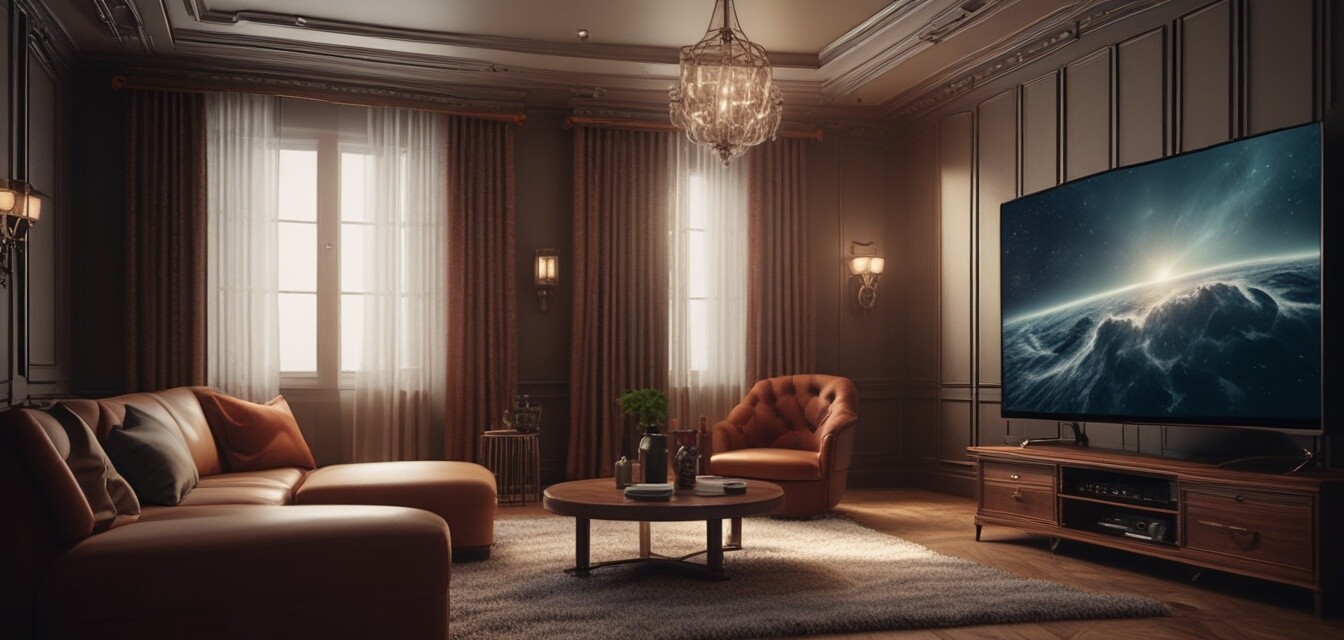
How to combine traditional and modern home theater elements
Key Takeaways
- Blend classic aesthetics with modern technology for a unique home theater experience.
- Carefully select furniture and decor that complements both styles.
- Utilize acoustic treatments to enhance sound quality.
- Implement smart home integration to effortlessly control your system.
- Pay attention to speaker placement for optimal audio performance.
Creating a home theater that fuses traditional and modern elements can provide a unique and captivating experience. This guide will explore various ways to effectively merge classic designs with cutting-edge technology. By following these steps, you can achieve a stunning setup that resonates with both nostalgic aesthetics and contemporary functionality.
Understanding the elements
Before diving into the design process, it's essential to understand the key elements of traditional and modern home theaters.
| Traditional Elements | Modern Elements |
|---|---|
| Classic wooden furniture | Minimalist or sleek furniture designs |
| Vintage decor items | High-tech gadgets and devices |
| Warm colors and textures | Neutral colors and clean lines |
| Bespoke acoustic treatments | Advanced sound systems |
Step-by-step guide to combine styles
1. Choosing the right furniture
Your choice of furniture will set the tone for the theater. Aim for a balance between traditional and modern pieces:
- Look for vintage theater seats that provide comfort while retaining charm.
- Select coffee tables or side tables with modern lines to pair with classic seating.
2. Selecting decor items
Here are some decor ideas to harmonize the two styles:
- Incorporate modern artwork into a traditionally styled room.
- Use classic picture frames for modern prints.
- Mix metal accents with wooden shelving.
3. Integrating technology
Modern technology can often stand out or clash with traditional decor. Keep the following in mind:
- Consider hidden projector screens that retract into the ceiling or walls for a clean look.
- Use smart home integration to control lighting and sound without cluttering the space with remotes.
4. Setting up the audio system
Audio is a crucial aspect of any home theater. Here’s how to blend traditional and modern audio systems:
Beginner tips for audio placement
- Ensure speakers are placed at ear level when seated for optimal sound.
- Distribute speakers evenly to maintain balance across different areas of the room.
- Use acoustic panels that complement both traditional and modern aesthetics—think wood finishes or fabric-covered treatments.
5. Lighting considerations
Choose lighting that enhances your theme. Here are some suggestions:
- Use vintage-inspired chandeliers to add warmth while keeping your space illuminated.
- Incorporate recessed lighting controlled by smart systems for a modern edge.
Common mistakes to avoid
When combining these two styles, be careful not to:
- Overcrowd the room with too much decor or technology.
- Stick strictly to one style, causing disconnect.
- Ignore the importance of room acoustics when finalizing the setup.
Pros
- Creates a unique, personalized theater environment.
- Appeals to a wider audience with diverse tastes.
- Enhances visual aesthetic and functionality.
Cons
- May require more thought and planning than a singular style.
- Potential for mismatched elements if not carefully curated.
- Higher costs due to need for quality materials and technology.
Conclusion
Combining traditional and modern home theater elements can lead to a stunning and harmonious design. Focus on choosing the right materials, technology, and layout to create a unique experience that reflects your personal style. Don't hesitate to dive into the detailed guides in our Setup Tips section for further assistance!
Further reading
For more insights on audio systems and technology integration, visit our sections on Speakers & Sound Systems and Smart Home Integration.
With the right approach, blending these different styles can ensure your home theater is more than just a room—it's an experience. Happy designing!

